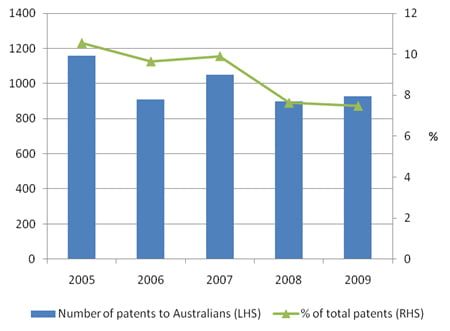Future Manufacturing Workshop
Last week I joined the AMTIL Future Manufacturing Workshop where I had the privilige to join with 80 other thought leaders in looking at how Australia was going to progress its manufacturing sector. This post is my summary of the presentation and discussions.
Manufacturing Minister
The opening address was by Hon Richard Dalla-Riva MLC, the Victorian Minister for Manufacturing. The talk was upbeat and showed the confidence the Victorian Government has in local manufacturing.
Some of the core statistics presented were:
- Victorian Manufacturers spend $1.5B on R&D each year and export $6.5B
- For every direct job in manufacturing, there are 5 indirect jobs around it
- For every $1 invested by the Government in manufacturing, $3.62 of net economic benefit is created
- Manufacturing jobs in Victoria grew by 2500 in the last reporting period
With figures like that, I wondered why they didn’t invest more?
And it was good to see manufacturing jobs on the increase.
The key challenges for the Victorian Manufacturing Sector are:
- Productivity must improve
- Networking and personal engagement by industry leaders needs to increase
- There is a need for greater support of leading edge technology creation and adoption
- SMEs are the forgotten group in Manufacturers. Most manufacturers are SMEs but they are significantly under supported.
- There is a need for critical skills development, and especially business skills to allow technician founded businesses to go to the next level.
I agreed with all of this and especially the need to upskill SMEs in their business capacity. This theme recurred over the course of the day and I was glad to see it recognised as a key issue.
Research Institutes in Australia
Goran Roos was the keynote speaker and as usual got straight to the point.
There is a huge and dysfunctional disconnect between what the publicly funded Research Institutes provide and what private sector manufacturers need. As a result, the majority if the research is done by private companies themselves. He did a quick review of other economies and in particular the ones that are going strongly and presented the following conclusions:
- Economies with a strong manufacturing base are faring best today
- You need to focus on a sustainable competitive advantage and not just price
- Strong and trusting relationships are required between researchers and manufacturers
- Australia has one of the worst research to commercialisation conversion ratios in the OECD
This builds on his well researched conclusion that Modern Economies Need Manufacturing.
The primary point that hit home with me is that we have substantial research capability in Australia, much of it highly regarded Internationally, but we are not turning this into a profitable economic outcome for Australia. And he gave four reasons for this:
- much of the Basic Research is conducted based on researcher’s personal interest in publishing papers and not because there is an identified industry need
- Most manufacturers are SMEs and can’t handle the IP contracts Universities and Public Research Institutes insist on
- SMEs have stopped looking to these research institutes as a source of value
- SMEs have become insular and collaboration in general is low
- Most SME issues need process research and not product or new knowledge research
His recipe for fixing this was easy enough to understand, but we spent a great deal of the rest of the day looking at how we might go about this. Since collaboration seems to be an issue in general and not just with Research Institutes, this was one of the areas we focused on.
He also presented a model of research and commercialisation stages which helped to categorise the types of activities and where they fitted in the research to market domain.
Basic Research is needed but usually does not generate profits in it’s own right. So it needs support. It may be several years before the research is developed to the point where it’s applicability to a market need has been firmly established. The output of this research phase is not directly commercially usable.
Applied Research is then used to take the Basic Research and focus on the specific market or industry need. A good example of this in Australia is the work of the CSIRO who are one of the premium performing Applied Research organisations in the world.
Commercialisation is taking the Applied Research and incorporating it into either a saleable product or a functioning production line. Don’t forget that many industry needs were identified as relating to the production process and not the product itself.
Most Universities try and operate at the Basic Research level as this generates the most papers and published works which is required for the career development of the researcher but does not directly benefit industry.
Most industry needs focus on the Commercialisation phase and so are not interested in most Basic Research. It is not market ready yet. The CSIRO can help to fill this gap some of the time but much of the time industry is choosing to do its own research because of this.
CSIRO
Dr Swee Mak of the CSIRO presented a comprehensive and well thought out report on their activities and engagement issues.
Again, the inability for SMEs to easily work with the CSIRO was one issue they identified as well as the absorptive capacity of SMEs. This refers to the level of effort required to set up a project with the CSIRO which could easily require three man months of effort on the part of the SME. Many cannot afford this. In our case, we can bring a project through to completion for that level of effort so this wouldn’t work for us unless it was a much larger project or needed specialist research we couldn’t do for ourselves.
Of the $32B spent on R&D in Australia, $7.5B goes to Universities, $5B goes to the CSIRO and other public sector Research Institutes, and the remaining $19.5B is spent internally by private companies. So the majority of the research conducted in Australia is private sector and not public sector. This is not always recognised and many Research Institutes act as if they are the only source of research and this is clearly n0t the case. At present, they aren’t even the main or referred source of research and so collaboration really needs to be both ways. There is research that institutes can obtain from the private sector.
Clearly Australian Research and Development is in need of some redevelopment.
Funding Opportunity
Roger La Salle, creator of the Innovation Matrix thinking process, presented a number of innovation scenarios but his primary point is one that I think will be hard to sell but worth considering.
Reward success, not effort.
Roger is in favour of getting rid of most of the grants and subsidies and instead giving companies tax breaks for successfully commercialised IP. This won’t work for basic research but it should encourage getting the applied research through to the market. This fitted well with the Commercialisation Research model presented by Goran Roos.
Increasing Industry Engagement
The primary part of the day for me was a pair of workshops looking at what is working, what is not and what we can do to improve the situation. This will then be used to inform government policy direction for manufacturing. A few of the ideas were:
- Identify researcher super connectors. These are people who know the researchers and help to connector research prospects with the right researchers. At present this doesn’t happen as the point of contact just looks to fit their capability to the presented need rather than identifying the best group to deliver a solution.
- Use an award system to identify best collaboration between a researcher and end customer. The award goes to both.
- Look at mechanisms to link industry needs to research so that grants are only available for industry relevant issues.
- It is time to decide that we got it wrong in deciding to get rid of manufacturing and to start putting policies in place to encourage local manufacturing
- CRCs can work well for industry results but we need to weed out the ones that don’t
- Universities need a different brand for selling R&D services. Their primary brand is a teaching brand.
Successful Endeavours specialise in Electronics Design and Embedded Software Development. Ray Keefe has developed market leading electronics products in Australia for nearly 30 years. This post is Copyright © 2012 Successful Endeavours Pty Ltd








